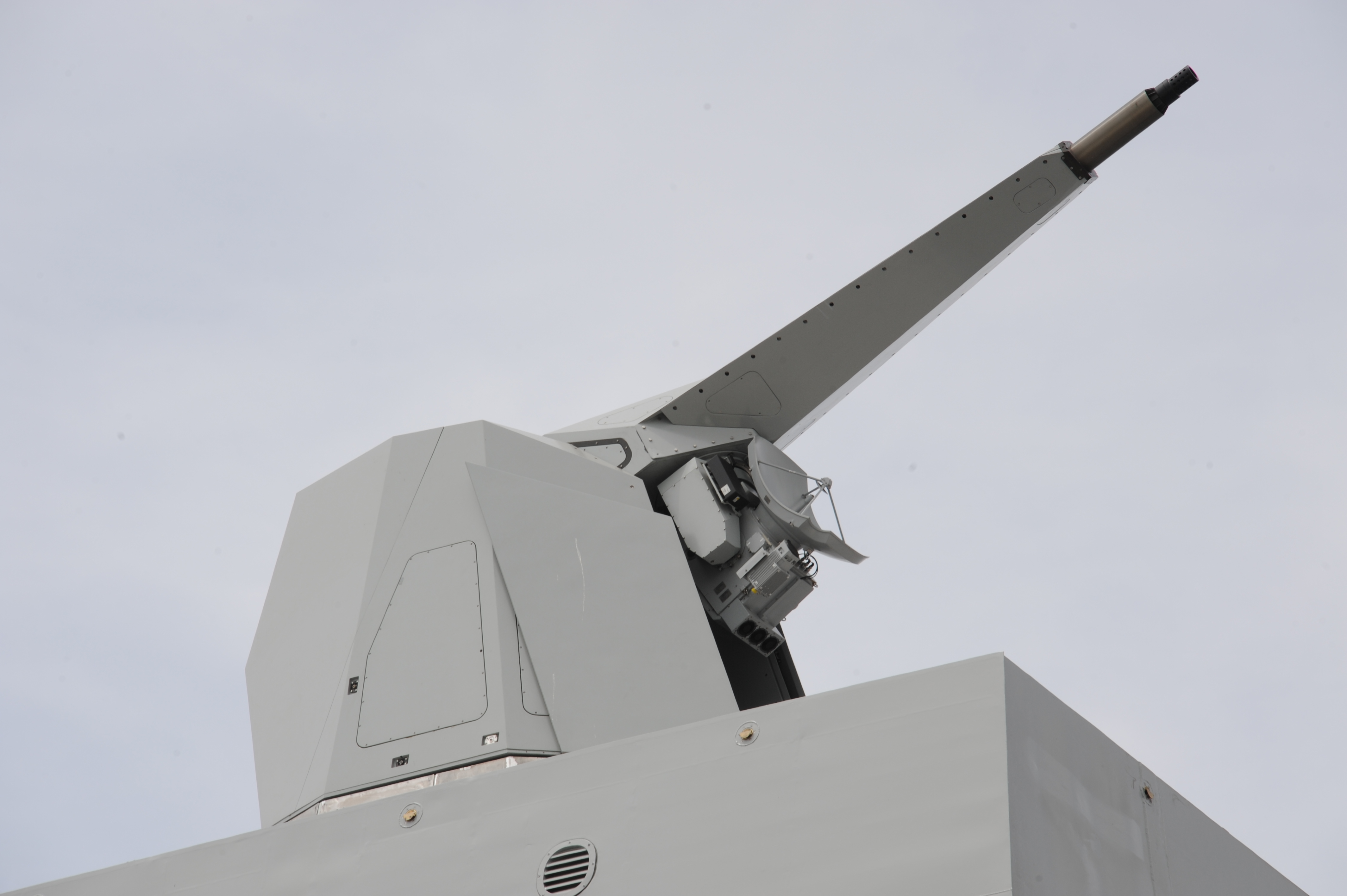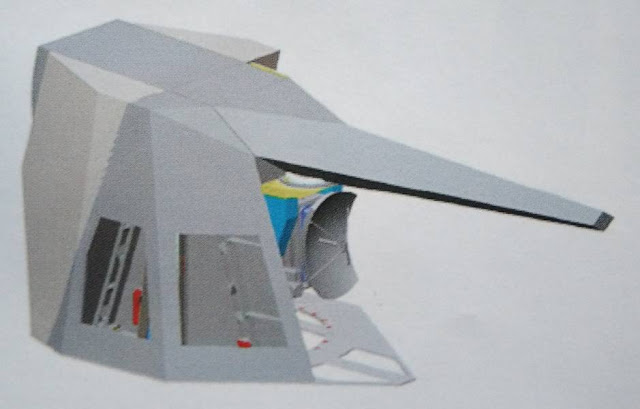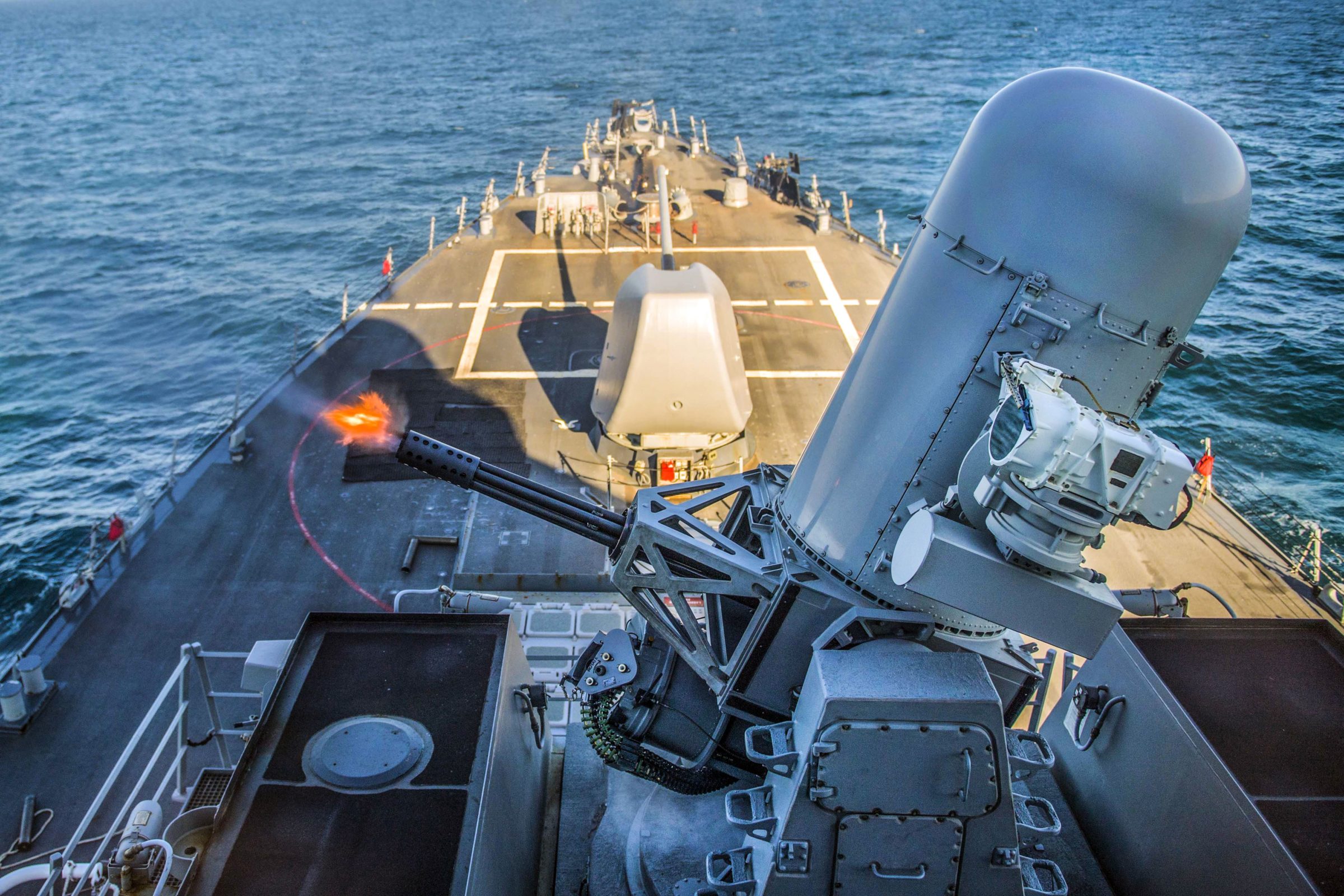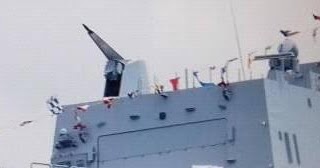I have a question, and I apologize if it's a stupid one, but I found some Russian sources claiming that distance between the radar and the CIWS decreases its accuracy. I.e. a setup like Phalanx is preferable to something like Kortik which has two spaced apart cannons, and even more preferable to the AK-630 setup which depends on the mast-mounted radar. Is this true? Are there advantages/disadvantages to the accuracy of the CIWS vis-a-vis placement of the radar?
Firstly, can I state I have a rudimental understanding of this subject (
accuracy of equipment) & am no expert. However, I can 'agree' (
IMHO) that a mount that is separate from its data source (
radar information), will be 'less accurate' than one that has its data source directly interfaced with the mount / cannon.
To clarify / explain - the biggest issues will relate to latency (
delay / lag), in data sources / operational signals & physical/mechanical lag.
To further explain - As an example, a target is identified on radar & the radar is on top of the mast on a large ship (
Frigate or Destroyer).
The information that has been received, has to be decoded & interpreted by the radar system (
providing simplistically the target data on course / speed). This is then fed via cables to the command system in the Ops room / CIC. This data can be directed such that once it has been processed by the radar system, a direct data line could go to the processing equipment for the mount/CIWS.
Based on physical location of the x2 pieces of equipment (
radar & mount processors), along with the routing of cabling around the ship, that data may have to flow thru up to 300m of cabling, of different diameters, possibly thru plugs & sockets / connectors, possibly even being converted into light & transmitted thru fibre optic cabling. The cabling itself will have an in-built electrical resistance that also has to be overcome (
the longer the distance, the higher the resistance & effectively the longer time it will take). The physical electrical resistance (
at plug & socket / connectors / 'data convertors' where data is converted into light signals & subsequently decoded & reverted back to electrical) & the distance covered will compound the latency of the data (
possibly only by microseconds), but still delays it.
Add to this the additional distance from the processing equipment to the mount, the quality of the materials used / age of the equipment, its inner workings / circuit boards, how well it is maintained etc. there is yet more delay.
Even if we were to eradicate the delay detailed above there's then the mechanical/physical operation of the gun mount & the issues in the drive system, going from zero movement, to getting the equipment drive motors to move in both horizontal & vertical planes, then stopping the drive at the correct position, noting that we're trying to track a constantly moving target, so the position is constantly moving/changing.
Then there's other key source data that's needed - feeds from the ships gyro system, (providing course / heading, speed over the ground, pitch & roll), air temperature, barometric air pressure & yet again any latency in that data source / distance from this equipment to the mount processing equipment.
When mounts (
such as Phalanx or Goalkeeper) were introduced, the manufacturers were probably aware of this issue & it is therefore part of the methodology in their design, to reduce the latency in the data, by having the systems designed as 'stand-alone', so they have their own gyro compass, their own radar & their own processors, thus cutting out a lot of the issues due to distance / electrical resistance.
As technology has advanced over the last 30 years, we've moved away from analogue systems, into digital, so that issues with electric motor drives can be significantly reduced by the control equipment. Better software, designed to have the drive motors 'in flux' (
i.e they are effectively vibrating (back & forth)), so that the peak load needed to get the electrical motor to move against gravity / natural resistance is 'reduced'. The physical design of the drive motors themselves will also have been reviewed, with the lightest (
weight), least resistant materials that can be used in motor bearings, etc. This helps the drives turn more easily & therefore quicker. The processing of the data will also have benefitted from the technological advances in computing (
hardware & software), which will also provides benefits.
On Naval equipment / systems that I've worked on that have utilised 'segregated' equipment (
Noting NOT CIWS, but standard Naval guns, with stand alone processing systems), that while the target / incoming missile is at greatest range from the ship, the accuracy will be lower, due to the transmission time of the radar returns to & from the target, but at distances below 10kms, there would effectively be minimal difference, as the track data calculations & the intelligence of the processing software can 'predict' the missile/targets expected trajectory & can compensate for it, assuming that the system has been provided with enough time (
i.e. - If a system is tracking a target from 60Km, it will be more accurate than if it only picks up the missile at 15Kms from the ship).
SA






